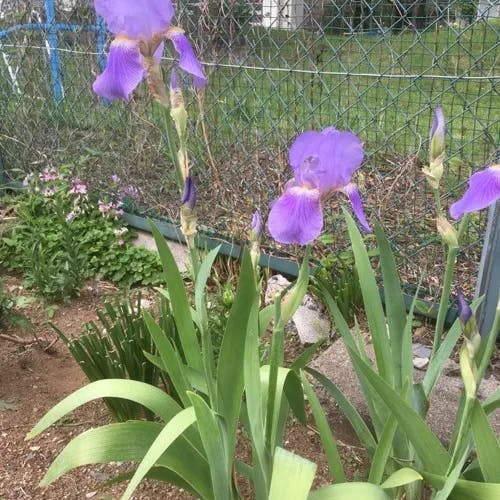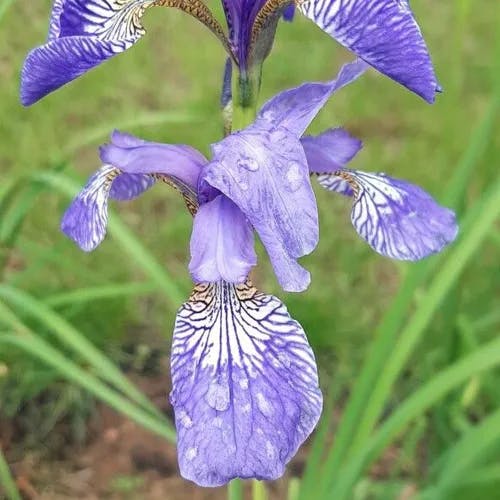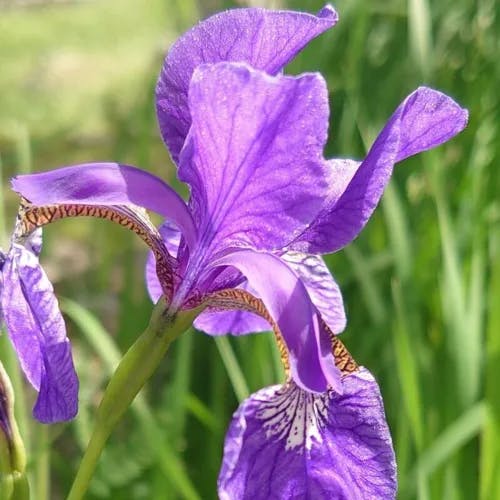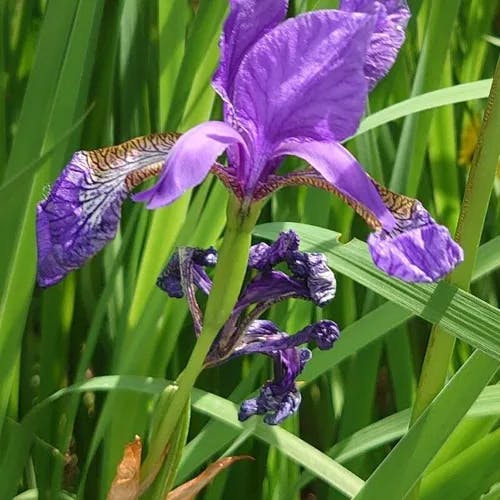The plant known as Iris sanguinea grows from 50 to 80 centimeters tall. It has sword-shaped green leaves around 40 centimeters long that spread out from the base in a fan pattern. In late spring and early summer, this iris produces very noticeable flowers between 7 and 10 centimeters wide. The flowers are a deep purple-red color, which is why it is called the Blood Iris. Each stem has 2 or 3 flowers. After the flowers fade, seed capsules form containing many brown, wrinkled seeds. The seeds spread by wind and water so the Blood Iris can grow in new areas. This iris does best in sunlight and well-drained soil. It can resist most pests and diseases, but slugs and snails may eat it. In the Victorian language of flowers, the iris represented faith, hope and wisdom. Its deep red color can symbolize passion and intensity. There are varieties of the Blood Iris with lighter blue or more intense dark red flowers. Overall, the striking flowers and hardy nature of Iris sanguinea make it a popular garden plant.
0
0










